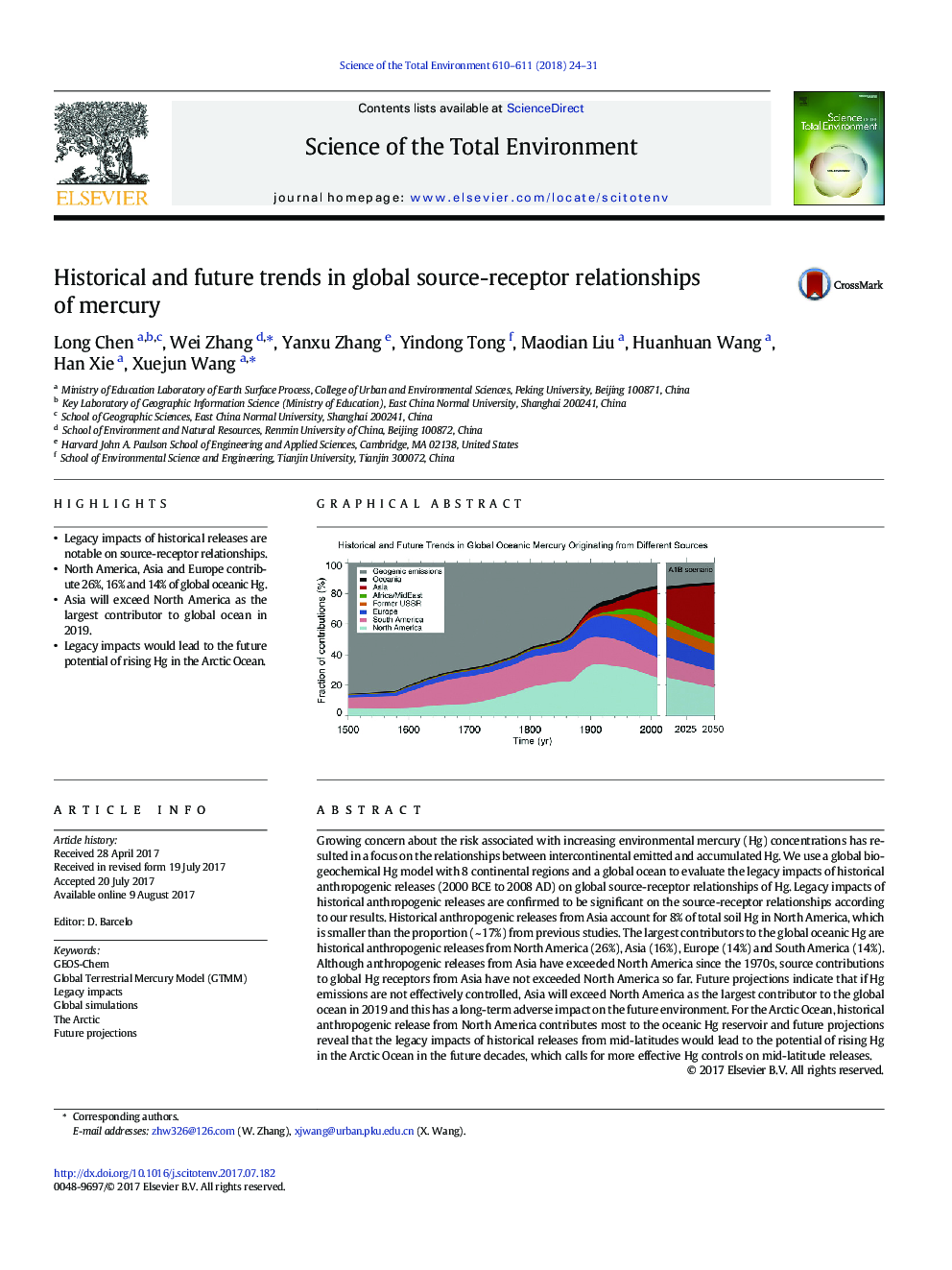| Article ID | Journal | Published Year | Pages | File Type |
|---|---|---|---|---|
| 5750168 | Science of The Total Environment | 2018 | 8 Pages |
â¢Legacy impacts of historical releases are notable on source-receptor relationships.â¢North America, Asia and Europe contribute 26%, 16% and 14% of global oceanic Hg.â¢Asia will exceed North America as the largest contributor to global ocean in 2019.â¢Legacy impacts would lead to the future potential of rising Hg in the Arctic Ocean.
Growing concern about the risk associated with increasing environmental mercury (Hg) concentrations has resulted in a focus on the relationships between intercontinental emitted and accumulated Hg. We use a global biogeochemical Hg model with 8 continental regions and a global ocean to evaluate the legacy impacts of historical anthropogenic releases (2000Â BCE to 2008Â AD) on global source-receptor relationships of Hg. Legacy impacts of historical anthropogenic releases are confirmed to be significant on the source-receptor relationships according to our results. Historical anthropogenic releases from Asia account for 8% of total soil Hg in North America, which is smaller than the proportion (~Â 17%) from previous studies. The largest contributors to the global oceanic Hg are historical anthropogenic releases from North America (26%), Asia (16%), Europe (14%) and South America (14%). Although anthropogenic releases from Asia have exceeded North America since the 1970s, source contributions to global Hg receptors from Asia have not exceeded North America so far. Future projections indicate that if Hg emissions are not effectively controlled, Asia will exceed North America as the largest contributor to the global ocean in 2019 and this has a long-term adverse impact on the future environment. For the Arctic Ocean, historical anthropogenic release from North America contributes most to the oceanic Hg reservoir and future projections reveal that the legacy impacts of historical releases from mid-latitudes would lead to the potential of rising Hg in the Arctic Ocean in the future decades, which calls for more effective Hg controls on mid-latitude releases.
Graphical abstractDownload high-res image (214KB)Download full-size image
